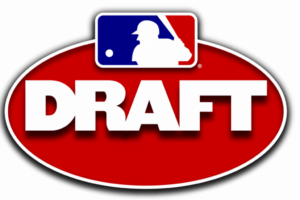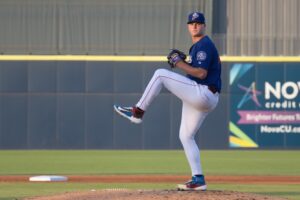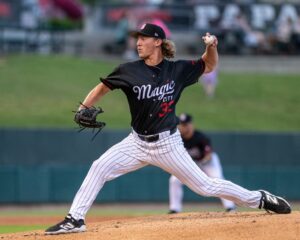State of the System: Starting Pitching
Positional Overview:
At the Major League level Chris Sale and Jose Quintana are the obvious #1 and #2 guys in this rotation and should be for years to come. Both are signed to potentially very team friendly contracts, too. John Danks is a tough one to project coming off his injury. If the Sox are not contending and Danks shows that he’s 1) Healthy and 2) Still effective against MLB hitters, then there should be several suitors for his services come the trade deadline, though his contract may still prove difficult to move without giving up some $’s. Felipe Paulino was a nice low risk, high reward type pick-up, and if he can pitch well and establish some trade value by the deadline then I’d expect the Sox to cash in for a prospect or two. Erik Johnson has high expectations placed on him coming into this season as our #2 prospect, though I think he may need a year or so to settle in at this level. In the Minors there is a lot of depth and several interesting guys at the lower levels, but not much in the way of high upside arms. Tyler Danish may be the only one (aside from Johnson) who projects as a mid to front of rotation (#2-3) starter. Thaddius Lowry could potentially have that upside, but he’s a long way away. That is the biggest weakness of this group. Fortunately the Sox will have a great opportunity to address this weakness in the June Draft, which is loaded with high upside arms.
What does Andre Rienzo’s long-term future hold?
Andre Rienzo’s 2013 season started in great fashion, as he looked very comfortable at Triple-A Charlotte, striking out a batter per inning while improving his control to 3.66 BB/9, from a 4.14 BB/9 mark in Double-A the previous year. Upon promotion to Chicago his BB/9 rose to 4.50 and his K/9 fell to just 6.11, leading to a poor 5.85 FIP. This disappointing performance took the shine off an otherwise successful year for Rienzo. Keith Law spoke highly of Rienzo’s cutter, but it proved ineffective in his MLB debut, and his fastball averaged 90 mph, which is a little lower than expected. That said he did display some promise and if he can improve his control and command, then he should be in a better position to succeed next around. Some also continue to suggest that the bullpen may be his eventual destination, though the Sox will give him the opportunity to show he belongs in the rotation for now. I think Rienzo has the potential to be a back of rotation starter, but this will be a big year for him.
Top Prospect:
Erik Johnson– Johnson is not a flashy prospect with big velocity or knockout breaking balls, but he does have a solid overall package that could see him become a mid-rotation starter. In 2013 Johnson tacked both Double-A and Triple-A with ease, averaging 8.5 K/9 and 2.53 BB/9. With Chicago the strikeout rate dipped to a disappointing 5.86 K/9 in 27.2 IP, though he maintained reasonable control. His fastball averaged 92 mph and peaked at 96.2, which is good. I do worry that Johnson’s slider is not quite good enough to consistently strike out Major League hitters at present, though he may just need a little more time to develop and gain experience at this level. A polished prospect, Johnson’s upside is not as high as others in this system, but he looks a reasonably safe bet to be a solid Major League contributor. For the season ahead, both ZIPS (0.9 WAR, 4.64 FIP, 136 IP) and Steamer (0.6 WAR, 4.88 FIP, 164 IP) have very pessimistic projections for Johnson, with Steamer projecting a 6.38 K/9, and ZIPS a slightly more optimistic 7.22 K/9. This would certainly be disappointing, though I suspect they are putting too much weight into his 5 MLB starts last year and ignoring his strong Minor League performance.
Best of the Rest:
Chris Bassitt– Bassitt had a nice breakout campaign in 2013 after making the full-time move from ‘pen to rotation. He has a good fastball with lots of life and a solid slider. Dominates right-handers but struggles against lefties, perhaps due to lacking a usable changeup. As a result may be destined to switch back to the bullpen. Could potentially make it as a back of rotation starter, but bullpen role is more likely.
Chris Beck– Scouts have always liked Beck’s stuff, but the results, and the lack of strikeouts in particular, are a worrying sign. I have a very hard time seeing him as an MLB pitcher while he’s only striking out 4.32 batters per 9, as was the case for Beck in A+ last year, though that did improve to 7.07 K/9 in 5 Double-A starts. Beck does get a lot of ground balls from his sinking fastball, which can help to alleviate some of the strikeout concerns, but unless the K’s improve, he’s a back of the rotation starter at absolute best.
Tony Bucciferro– Bucciferro was dominant last year, putting up a ridiculous 0.6 BB/9 (that’s 6 walks in 90.2 IP!) along with a strong 9.53 K/9, good for a 1.72 FIP, which led the Minors (among qualified starters). The problem with Bucciferro is that his stuff is only fringe-average, which the exception of his slider, which shows some potential, and he was 23 last year while splitting time between Rookie Ball and Single-A. There is precedent for extreme control and command pitchers to get by on fringy stuff, but the success rate is not great. In all likelihood he will struggle to strike batters out as he enters the higher Minors (Double-A and above), but he has a chance. Upside could be a back of the rotation/long relief type arm.
Tyler Danish– Scouts may like to talk about Danish’s small frame, max effort delivery, unorthodox mechanics, and say he’s destined for the ‘pen, but the guy can flat out pitch. One of my favorite prospects in the system, Danish’s fastball stands out among a repertoire that could feature three above average pitches, and he can touch the mid 90’s while still getting good movement. He was great in pro debut, displaying strikeout ability (8.4 K/9) along with excellent control (1.5 BB/9). Could move very quickly for a high school pick, with ceiling of a #2-3 starter.
James Dykstra– Despite being a 6th round pick last year, expectations for Dykstra may not have been high as he signed for only $30,000 ($200,000 under-slot), which is outside of the top 10 rounds money. His stuff is more solid than great, with a low 90’s fastball, promising curve and usable change. Command and control needs work. He has had some extreme ground ball rates in his early pro career, which is a very encouraging sign.
Chris Freudenberg– Freudenberg was a 9th round draft pick who signed for an over-slot bonus last year. Fastball sits around 90 with decent curve and cutter. Was good in pro debut with 8.58 K/9 and 3.18 BB/9. 3.94 FIP looks much better than 5.40 ERA. Not too much information on him at present.
Myles Jaye– An interesting arm that came to the Sox along with Daniel Webb in the Jason Frasor trade. Jaye has never produced any standout numbers during his pro career (6.77 K/9, 3.35 BB/9 at A+ in ’13), but there have been some encouraging scouting reports. Baseball Prospectus’ Jason Parks liked what he saw during ST, reporting low to mid 90’s velocity with good life on the fastball, and an improved slider with “long wipeout break”. Has the potential to start.
Charlie Leesman– Leesman’s prospect status slipped this past year despite posting the best K/9 rate of his career (in any stint >11 IP) at 7.95. That’s up from a 6.87 K/9 in 2012. Unfortunately the control went the other way, jumping from 3.47 BB/9 in ’12 to 4.18 in ’13. Ultimately, Leesman is a prospect that lacks both plus stuff and plus control/command, and he probably projects best as a lefty specialist out of the ‘pen.
Adam Lopez– Lopez came out of nowhere (21st round pick in 2012, $2,500 bonus) and put up fantastic numbers in 2013, including a big 11.69 K/9 and good control (3.17 BB/9). His FIP, 2.14, was one of the best in the Minors last year. Jim Callis put a 60 grade on his fastball, with his slider and change also having the potential to be above average or better pitches. Nathan Stoltz referred to Lopez’s change as “a pitch of considerable filth” with great movement. This gives him a very interesting three-pitch mix that could give him potential as a mid rotation starter, though it is worth noting that he’s on the older side (24), hasn’t pitched above Single-A, and starts the year on the DL.
Andrew Mitchell– Mitchell slipped to the 4th round in the ’13 draft and many experts think he could be a steal. A big fastball and breaking ball that both project as plus pitches gives him plenty of intrigue. A lack of a third pitch and poor control and command (4.86 BB/9 in pro debut, 4.9 BB/9 in college career) may prevent him from being a starter long-term. Good upside but more work needed than you would normally expect from a top college pick.
Braulio Ortiz– Ortiz impressed in 2013 as his strikeout rate took a big step forward with a 10.69 K/9 in Single-A and 9.55 K/9 in Advanced-A, after a 6.62 K/9 mark the prior year in rookie ball. Ortiz’ fastball is a legitimate plus pitch with big velocity and life. Control and secondary offerings need a lot of work, 6.3 BB/9 in ’13 is bad, but Ortiz has good potential and is an interesting arm to watch. Probably fits better in the bullpen long-term.
Mike Recchia– The Sox fished Recchia out from the Independent Leagues after a failed stint with the Yankees, and he provided a nice surprise in ’13. He’s of a similar ilk to Bucciferro, though the control and command is not at the same level (his BB/9 was only 2.21). At 25 he’s another older guy, and hasn’t yet pitched above Advanced-A, so it’s important to put his performance last year into perspective. His stuff doesn’t jump out, but he can get the fastball up to 94 and his slider shows promise. A fringy prospect, but could make it as a bullpen arm.
Scott Snodgress– Snodgress took a step back last year after an excellent 2012 campaign that saw him jump into the top 10 as our #9 prospect. He’s down to #16 in the most recent list. He wasn’t able to strike out guys in his first go at the Double-A level and had a 5.64 K/9. This could indicate a lack of stuff. Snodgress’ fastball is average at best with high 80’s/low 90’s velocity. His curve and change both show potential but still need more work. At very best you could see Snodgress as having two above average secondary pitches to go along with an average fastball and strong ground ball rates. More likely he’ll end up with a fringe-average fastball and two average secondary offerings, giving the upside of an innings eating #4-5 starter.
Eric Surkamp– Surkamp has marginal stuff with a high 80’s fastball and perhaps average secondary pitches. His fastball command is excellent, though it will need to be with his lack of velocity. Had some excellent numbers in the Minors prior to undergoing TJ surgery and missing the 2012 season. K/9 dropped to 6.81 last year in Triple-A, though he may have just been getting back up to speed following the aforementioned surgery. Looks like a AAAA arm to me but his command could give him a chance to stick in MLB somewhere.
Keep an eye on…
Thaddius Lowry– Lowry can run his fastball up to 96, though typically sits in the low 90’s and has shown some aptitude for throwing both a slider and splitter. Good projectability according to scouts and has a chance to add more velocity in the future. May need a lot of development time but could be special if everything works out.
Matt Ball– Ball’s ceiling may not be as high as Lowry’s but he another interesting, highly projectable, young arm to watch from the 2013 draft. Was very good in pro debut (9.27 K/9, 3.22 BB/9, 3.20 FIP) and will (thankfully) be given a chance to start this year. His fastball topped out at 92 in high school, but he is expected to add more velocity as he matures.






